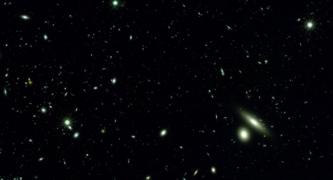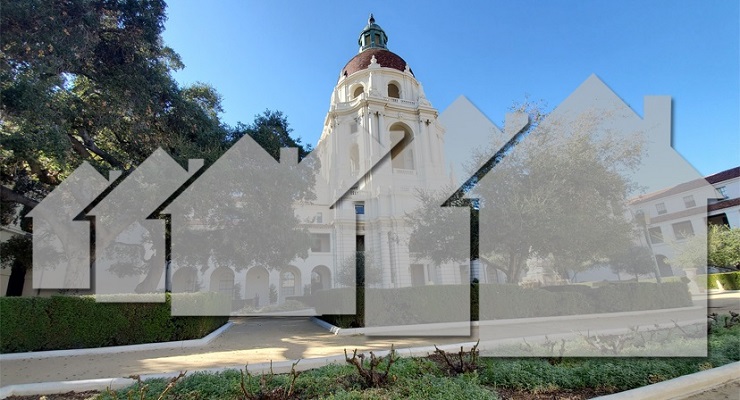
This image is a slice of a much larger simulation depicting the cosmos as NASA’s Nancy Grace Roman Space Telescope will see it when it launches. Every blob and speck of light represents a distant galaxy, except for the urchinlike spiky dots, which represent foreground stars in our Milky Way galaxy. Credit: C. Hirata and K. Cao (OSU) and NASA’s Goddard Space Flight Center
Scientists at NASA’s Jet Propulsion Laboratory in Pasadena have made significant contributions to a groundbreaking simulation project called OpenUniverse. The project, which utilized supercomputers at the U.S. Department of Energy’s Argonne National Laboratory, has created nearly 4 million simulated images of the cosmos as it will be seen by NASA’s Nancy Grace Roman Space Telescope and the Vera C. Rubin Observatory in Chile.
Researchers are now releasing a 10-terabyte subset of this data, with the remaining 390 terabytes to follow this fall once they’ve been processed. For the first time, the simulations factored in the telescopes’ instrument performance, making it the most accurate preview yet of the cosmos as Roman and Rubin will see it.
“Using Argonne’s now-retired Theta machine, we accomplished in about nine days what would have taken around 300 years on your laptop,” said Katrin Heitmann, a cosmologist and deputy director of Argonne’s High Energy Physics Division who managed the project’s supercomputer time. The Theta supercomputer was operated by the Argonne Leadership Computing Facility, a U.S. Department of Energy Office of Science user facility.
Alina Kiessling, a research scientist at JPL and the principal investigator of OpenUniverse, emphasized the importance of collaboration in this massive undertaking. “Few people in the world are skilled enough to run these simulations,” Kiessling said. “This massive undertaking was only possible thanks to the collaboration between the U.S. Department of Energy, Argonne, SLAC, and NASA, which pulled all the right resources and experts together.”
The Roman and Rubin simulations cover the same patch of the sky, totaling about 0.08 square degrees (roughly equivalent to a third of the area of sky covered by a full Moon). The full simulation to be released later this year will span 70 square degrees, about the sky area covered by 350 full Moons.
“OpenUniverse lets us calibrate our expectations of what we can discover with these telescopes,” said Jim Chiang, a staff scientist at U.S. Department of Energy’s SLAC National Accelerator Laboratory. “It gives us a chance to exercise our processing pipelines, better understand our analysis codes, and accurately interpret the results so we can prepare to use the real data right away once it starts coming in.”
JPL’s involvement in the project has been crucial in simplifying data processing pipelines and making them usable. “We made phenomenal strides in simplifying these pipelines and making them usable,” Kiessling noted. The simulations are now accessible through a partnership with Caltech/IPAC’s Infrared Science Archive (IRSA), allowing researchers to familiarize themselves with the tools before working with real data in the future.
OpenUniverse, along with other simulation tools being developed by Roman’s Science Operations and Science Support Centers, will prepare scientists for the large datasets expected from the telescope. The project brings together dozens of experts from JPL, U.S. Department of Energy’s Argonne, IPAC, and several U.S. universities to coordinate with various teams and collaborations.
The Nancy Grace Roman Space Telescope’s primary industrial partners are BAE Systems, Inc. in Boulder, Colorado; L3Harris Technologies in Rochester, New York; and Teledyne Scientific & Imaging in Thousand Oaks, California. The Vera C. Rubin Observatory is jointly funded by the National Science Foundation and the U.S. Department of Energy Office of Science, with early construction funding received from private donations through the LSST Discovery Alliance.
the contributions of JPL scientists to the OpenUniverse project will play a vital role in unraveling the mysteries of dark energy. The simulations will help researchers fine-tune their data processing methods and make groundbreaking discoveries from the observatories’ future data.














 1 comment
1 comment


